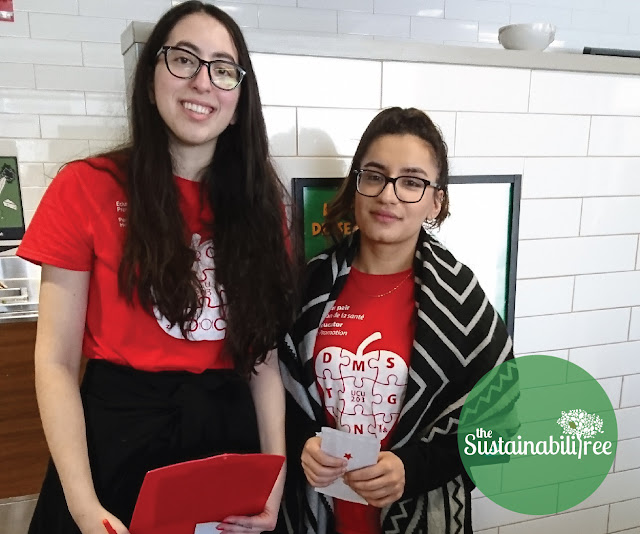Dining Hall Waste: A Back of House Tour
You see the Dining Hall is zero waste but that is in the part where you and I eat. There are no straws, no wrappers, no containers, nothing that can become garbage. What about in the "back of house" where all the food is made? Is that also zero waste? Now figuring this out was a little harder than I thought so I got in contact with Maryann Moffitt from Food Services and asked her to show me around.
First there were a lot of elevators and stairs in there, WOW! I would have definitely gotten lost. Luckily I had Maryann to guide me. We went right to the core of the question which meant the she actually took me to see the waste, not just some stats from on a spreadsheet in her office.
First we went to the "halfway point". This is where all waste goes temporarily before being brought down under the UCU to be dealt with.

Maryann showed me where the pile of compost bins go as they get filled up. They fill up like a dozen of these every day.
Then she showed me all the boxes that carry the fruits and vegetables. They go into a wooden bin and are "broken down" just so that there is enough room to put them all.

Then we headed to the area where the final stage happens, the place where the trucks pick it all up. I was genuinely surprised at the ratio of compost to recycling to actual garbage.

The red bins are cardboard recycling. There are more of them than anything else. Now this makes sense since the kitchen receives a lot of food everyday and it has to come in somehow. Not just fruits and vegetables, but cans of sauce, bottles of oil... basically everything arrives in a box.
Better that it's in recyclable cardboard than disposable plastic right?

And of course there are also a ton of green compost bins as you can clearly see.

This bin, this blue one here, is the only garbage bin they have. I am serious. One garbage bin, in comparison to the amount of recycling and compost. All the garbage in this bin is compacted first and then put into this one bin. I am truly impressed.

I will be honest with you. I was kind of expecting to find a secret stash with mountains of garbage. I thought there was no way they couldn’t produce anything but mountains of garbage given the fact that they serve something like 6,000 meals every day.
I was ready for a big exposure moment, like "Gotcha! How do you explain mount Trashmore?"... but the truth is, yes they could produce some garbage, but my word their ratio is amazing! To recycle and compost that much is amazing. Seriously. The only way I could have been more amazed would have been if I found out they had no waste at all, but you know that's why people have long term goals right?
~ clarissa - communications intern









Post a Comment